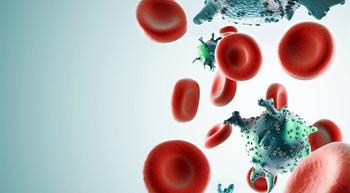
Treatment with Imbruvica and Rituxan May Benefit Patients with Waldenstrom’s Macroglobulinemia Out to 5 Years
Key Takeaways
- Imbruvica plus Rituxan significantly improved PFS and response rates in Waldenstrom’s macroglobulinemia patients compared to placebo plus Rituxan.
- The combination therapy showed a 68% PFS rate at 54 months, with a major response rate of 76%.
The benefit observed in patients with Waldenstrom’s macroglobulinemia treated with Imbruvica (ibrutinib) plus Rituxan (rituximab), compared with placebo and Rituxan, focused on survival and response to the treatment, both of which occurred despite prior treatment and genotypes.
Treatment with Imbruvica (ibrutinib) plus Rituxan (rituximab) in patients with Waldenstrom’s macroglobulinemia, a slow-growing type of non-Hodgkin lymphoma, was superior regarding response and survival out to five years compared with placebo plus Rituxan, according to data presented at the ASH Annual Meeting and Exposition.
“When you add (Rituxan), it looks like that the response rates and also the PFS largely act independently of the genotype,” said Dr. Christian Buske, medical director at the Comprehensive Cancer Center Ulm at the Institute of Experimental Cancer Research at University Hospital Ulm in Germany, during the discussion after his virtual presentation of the data. “So, I think this is particularly interesting for patients who carry a (mutations) … In addition, what we see is that by adding (Rituxan), it looks like that the time to response, to measure response is shorter. And this is, I think, clinically relevant because, you know, many of the patients we are treating already suffering from Waldenstrom’s (macroglobulinemia). This is an indication for treatment, but also for us as clinicians because for us, it's for sure an advantage when we see that this approach we are selecting for this patient indeed works and helps the patient.”
In this phase 3 trial, researchers analyzed data from 150 patients with confirmed symptomatic Waldenstrom’s macroglobulinemia who were either treatment-naïve or were previously treated with prior Rituxan therapy and had a minor response. All patients were randomly assigned either 420 mg of Imbruvica once per day plus Rituxan (75 patients; median age, 70 years; 60% men) or placebo plus Rituxan (75 patients; median age, 68 years; 72% men). Both groups received 375 mg/m2 of Rituxan intravenously once per week at weeks one to four and at weeks 17 to 20.
“The overall goal of this trial was really to compare two chemotherapy-free approaches,” said Buske during the discussion after his presentation. “What we have to know is actually that particular … in the U.S., (Rituxan) single agent was widely used, was the most frequently used chemotherapy-free approach before the introduction (Imbruvica).”
End points of interest included response rates, progression-free survival, overall survival, time to next treatment, improvement in hemoglobin and safety.
During a median follow-up of 50 months, median PFS was not reached in patients assigned Imbruvica plus Rituxan compared with individuals assigned placebo plus Rituxan, who attained 20.3 months of PFS. At 54 months, rates of PFS were 68% in the Imbruvica plus Rituxan group vs. 25% in the placebo plus Rituxan group. Imbruvica plus Rituxan also demonstrated a PFS benefit compared with patients assigned placebo plus Rituxan regardless of genotype or prior treatment status. This benefit was also observed in several subgroups including sex, age at the beginning of the study, hemoglobulin, serum immunoglobulin and International Prognostic Scoring System for Waldenstrom’s Macroglobulinemia, a score that serves as a staging system for this condition.
The major response rate, defined as a partial response to treatment or greater, was seen in 76% of patients assigned Imbruvica plus Rituxan vs. 31% in individuals assigned placebo plus Rituxan. Overall response rates for both groups were 92% and 44%, respectively. High response rates in patients assigned Imbruvica plus Rituxan were observed despite prior treatment and across genotypes. More patients assigned Imbruvica plus Rituxan had sustained improvements in hemoglobin compared with those assigned placebo plus Rituxan (77% vs. 43%). Both arms did not reach median OS. At 54 months, the rate of OS was 86% in the Imbruvica plus Rituxan group compared with 84% in the placebo plus Rituxan group. After disease progression was confirmed, 47% of patients originally assigned placebo plus Rituxan crossed over, or started to receive, Imbruvica plus Rituxan.
The median time to next treatment was not reached in patients assigned Imbruvica plus Rituxan, whereas patients assigned placebo plus Rituxan had a median time to next treatment of 18 months. At 54 months, subsequent treatment was not received by 87% of patients in the Imbruvica plus Rituxan group and 29% of those in the placebo plus Rituxan group.
The median treatment duration for the Imbruvica plus Rituxan group was 48 months. The safety profile for this group was consistent with previous reports from this study, as there were minimal differences in common adverse event rates during 24 months of additional follow-up. The most common grade 3 to 4 adverse events, or more serious events, included hypertension (high blood pressure), atrial fibrillation (irregular heart rhythm), anemia and neutropenia (a low count of neutrophils, or a type of white blood cell).
“These adverse events are quite rare, and at least when you look at dose reduction or diarrhea, or hypertension, that there's a tendency that these adverse events occur less frequently later on during treatment,” said Buske. “With atrial fibrillation, we see again the same phenomenon, that there's a tendency that these adverse events occur less frequent with longer treatment.”
Nine of the 12 patients who developed grade 3 or 4 atrial fibrillation remained on treatment, and there were no other discontinuations of Imbruvica associated with other serious adverse events. Once the study ended, 45% of patients remained on Imbruvica plus Rituxan.
“I think an important notion is that responses are deepening over time, that patients can achieve up to 30% of a very good partial remission with longer treatment,” said Buske.
For more news on cancer updates, research and education, don’t forget to




